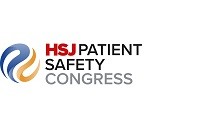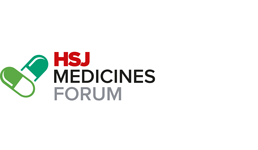Medical data must not only be patient centric – it should be shared and analysed for the benefit of whole populations too. Daloni Carlisle reports

Data is of prime importance to look at population health
Blue Cross and Blue Shield of Rhode Island (BCBS) last month sent out to its provider organisations its quarterly financial spreadsheet some 50 columns wide, with 2,600 rows of data which took 200 hours to compile.
These data points then took providers 400 hours to check and reconcile. At the end of this lengthy process, they received the payment due for the work they carried out for patients on behalf of the insurer.
‘Do spreadsheets provide any insight into the data?’
While spreadsheets have their place, are they really the most efficient way to carry out business in the 21st century? Apart from being laborious and expensive, do they provide any insight into the data or any evidence to drive transformation?
The answer from Nancy Mamo, managing director of population health analytics for BCBS, is emphatically no to both. So from next month, things will be done
differently using a web based system.
No more spreadsheets, of course, but beyond that a new world where clinicians and managers will have the evidence to transform services, driving up quality of care and reducing costs.
Population health
Ms Mamo and her boss, Erik Helms, vice president of provider network and medical economics for BCBS, have been working together within the Blue Cross network for several years. The broad term for their work is “population health” but it is also often referred to as “population health analytics”, “population health management” or “population health systems”.

There are almost as many definitions of population health out there as there are organisations using it. Equally, there are many claims made for what it can deliver: reduced costs, payment transformation, clinical service transformation, a new way to deliver person centred care or a way for integrated care to join up with public health.
That is why population health is a hot topic in healthcare, not just in the US but across Europe and in the UK too.
The purported benefits are all predicated on one condition: pulling together individual patient data in such a way that they can be aggregated and used not just to improve individual care but also the care provided to segmented populations.
‘Individual patient data can be aggregated to improve care provided to segmented populations’
Ms Mamo tracks her involvement in population health analytics to a decade ago when she put together a data registry for “Blues members” – people with health insurance from BCBS – in Michigan in 2005.
Along with over 90 per cent of US health plans, BCBS is signed up to the Healthcare Effectiveness Data and Information Set (HEDIS), a tool that measures performance on important dimensions of care and service. Altogether, it consists of 81 measures across five domains of care.
Briefly, HEDIS defines quality measures that members should receive according to specific criteria; health plans are calculated based on how they perform in each measure compared to other health plans.
These measures also influence a plan’s ability to receive specific bonus amounts for their older populations and also impact their scores for health plan accreditation.
‘Entering data onto spreadsheets was cumbersome, time consuming and not efficient’
Many plans develop their pay for performance programmes around these measures in an effort to incentivise providers to close gaps in care, and in return increase a health plan’s rate in those measures.
“When we did HEDIS years ago we sent out reams of paper,” recalls Ms Mamo. “There were up to 100 pages that physicians went through to look for gaps in care where things needed to be done for patients.
“There were teams of people entering data onto spreadsheets. It was cumbersome, time consuming and not efficient or effective.”
Transformative step
The system was migrated to CDs instead of paper, and then to the web in 2005 when Ms Mamo and Mr Helms developed a data repository of patient level information and a web application. It was transformative.
“We were the first out of the gate,” says Ms Mamo. “No one had done it before and it became the solution of choice for all the providers.”
It put data into the hands of clinicians. Ms Mamo explains: “The physicians had never seen this level of detail before.
“They could drill down to patient level detail and see a patient centred view of every patient.
“They could see risk scores, ask whether patients are involved in case management, identify those at high risk, those with chronic diseases and look at the gaps in their care.”
‘It created a proactive service rather than a reactive one’
It prompted healthy competition. She says: “Physicians are very competitive. The tool we developed highlighted individual gaps in care and physicians hated to see the red checks against their pages.”
It was the sort of data that drove improvement and transformation, says Ms Mamo, prompting providers to come up with new ways to engage with those patients who do not attend a first appointment for a mammogram or with patients reluctant to attend routine diabetes clinics, for example.
“We saw very quickly how physicians started daily huddles with their staff using the tool, looking at all the patients due in that day,” she says.
They identified gaps and started planning how to meet them, creating a proactive service rather than a reactive one.
Looking at the whole
By looking beyond individuals, doctors and managers, data can be aggregated to start looking at whole populations and at different data types, utilisation, cost or pharmacy data, for example.
Ms Mamo says: “They started to look at their populations and ask how many diabetics do we have? How many of them have asthma or coronary vascular disease?
Previously the only way to get that data was by looking at every individual medical record.” Now they could get it at the click of a mouse.
This led to the emergence of new models of care – for example, nurses leading community diabetes clinics where patients learned self-care. “They started doing things for populations rather than individuals,” she says.
The availability of new risk stratification tools promoted developments such as case management, with nurses reaching out to high risk members, Ms Mamo adds. “While the goal was to reduce utilisation and cost, it also improves members’ health and their quality of life.”
A huge difference
Overall, she says: “Physicians told us it made a huge difference to the care of the member and to the utilisation.” In other words, quality went up and cost went down.
Where Michigan led, others followed. Ms Mamo is reluctant to give detailed figures but says that population health has helped save BCBS plans a substantial amount in reduced emergency admissions alone.
Six or seven years ago, population health began to drive payment innovation that has seen health plans move away from fee for service – being paid for everything you do – and towards pay for value, with a contract based around improving quality for patients and reducing cost. This payment reform is one of the drivers behind the creation of accountable care organisations and the delivery of other new models of care across populations built around primary care such as the patient centred medical home.
‘We need to create new partnerships and integrate systems of care’
“We cannot sustain fee for service,” says Mr Helms. “We need to create new partnerships and integrate systems of care. That integration and the payment strategy come together in the nexus of better information.”
Such new payment models often include an element of risk sharing. Providers that make savings while driving up quality for a defined population or a cohort of patients receiving a defined care pathway that spans several providers get to keep some of what they have saved; the higher the quality scores, the greater the proportion of savings the providers can keep.
It is a controversial area, with conflicting evidence about the extent to which pay for value really does achieve the quality and cost aims. Interestingly, BCBS organisations – where there has been significant investment in data warehousing and analytics – have shown some of the best and most consistent results.
Despite the controversy, new payment approaches are rapidly gaining ground. Large groups of providers, employers and insurers in the US, both private and public, are now pledging to drive a significant amount of their business into these models.
For primary care too
It is not just hospitals that need to look at transformation but primary care too, says Mr Helms. “How do we create more space in primary care for a member to get their care or to meet them where they are to give them healthcare,” he asks.
“Do we create incentives for extended opening hours? It would seem that primary care does not have infrastructure to sustain this so we need to do things differently and create alignments that fill the gaps.”
Such alignments might be with high street pharmacy and an extended role for pharmacists or with telehealth providers, for example.
‘We need to create alignments that fill the gaps’
Mr Helms argues that the failure of some payment for value schemes may be down to the failure to integrate the data effectively. “A lot of investment has been made by providers in electronic medical platforms.
“States have invested in health information exchanges [that help those without insurance to find a health plan]. Health plans have invested in broad analytics. Where we have failed is in bringing together a consolidated view of the patient.”
And it is this consolidated view of the patient that is useful to doctors, enabling them to see their patients and define groups of patients with whom they need to engage in different ways. With this information, they can track quality, cost and utilisation and how this changes with service transformation.
“The analytic tools need to be available as part of the clinicians’ workflow,” he adds. “It cannot be in a situation where we have office staff looking at a different system.”
The primacy of data
Back in Rhode Island, Ms Mamo is now building just such a system with commercial partners MedeAnalytics. The contract was signed in November and the system should go live next month.
Its data sources will include hospital patient administration systems in provider organisations, including information about urgent and emergency care. “Very often physicians do not know that their patients have been admitted until they are discharged,” says Ms Mamo.
“Now they will know about emergency room visits very quickly. This is bringing information as close to the point of care as possible.”
One major task is building the data repository. “I’m a data geek,” says Ms Mamo cheerfully. “What drives me is not only being able to provide the level of detail needed to change member health, but also having clean data and there is a lot to do in that space.”
Lessons galore
With so much interest in population health in the NHS, she has some lessons from the coalface. The first is the need for a unique patient identifier.
“We didn’t have a sophisticated enough methodology in Rhode Island and we have had to buy a solution,” she says. The NHS of course has the NHS number and a drive for everyone to use it.
Second, it is crucial that the analytics provider understands what data the healthcare providers need. Ms Mamo asks: “What are the key pieces of data they need to understand the members?”
It needs to be updated frequently. It is no good if clinicians are viewing out of date information about patients.
‘Data needs to be updated frequently’
Third, you have to be able to do the job. “You must be able to execute and deliver a system that clinicians really need and that’s easy to use and easy to understand and puts exactly what they need to see in front of them at the time they need it.”
One issue that is a serious blockage to such developments in the NHS is data sharing. This is not something Ms Mamo has had to deal with.
“As the health plan we own the data. It is not an opt-in situation. When members sign up [to the health plan] with an employer they sign a waiver saying we are allowed to use the data.”
But she does have all the issues of data security and role based access that allows only those with a right to see data to access it.
She is most excited for the future. “We have an opportunity to change the way that healthcare is delivered in the state of Rhode Island. The physicians have not had this level of data, they have not had the opportunity to continuously measure quality. Pay for value is new.
“It is very exciting to be able to put this system out to the market place and see physicians wowed and able to deliver the kind of care that members deserve and need.”
Patient data: Look at the bigger picture
- 1
 Currently reading
Currently readingPatient data: Look at the bigger picture
- 2
- 3





























No comments yet